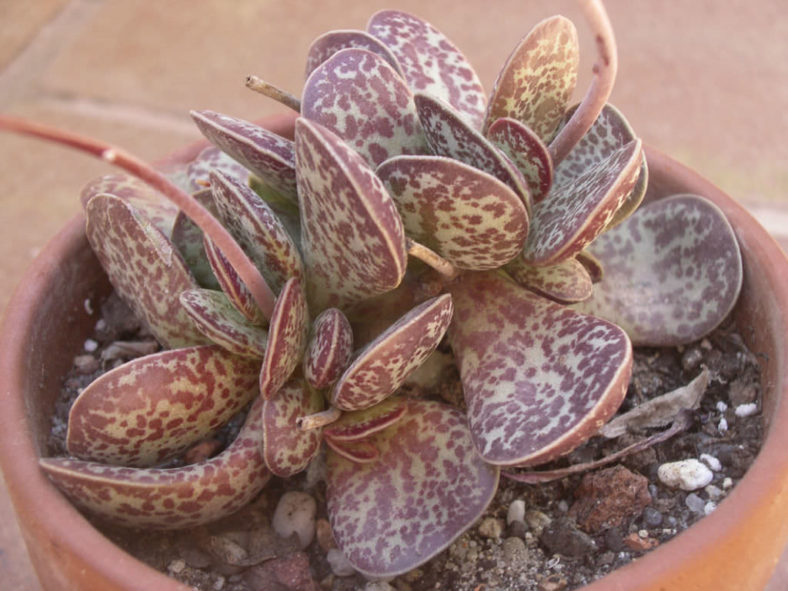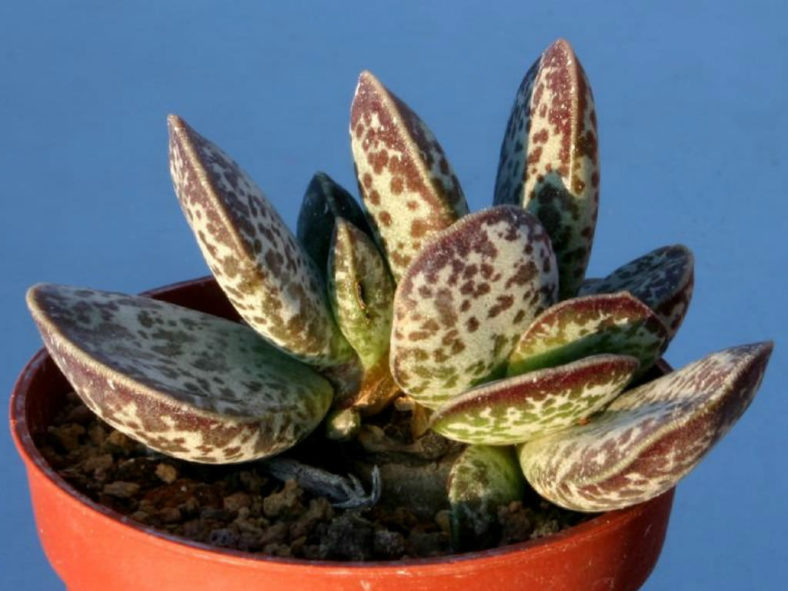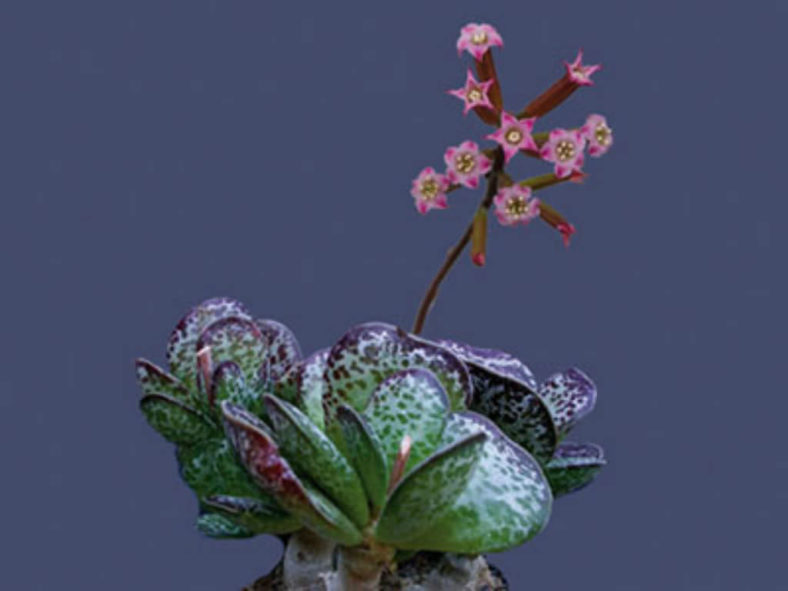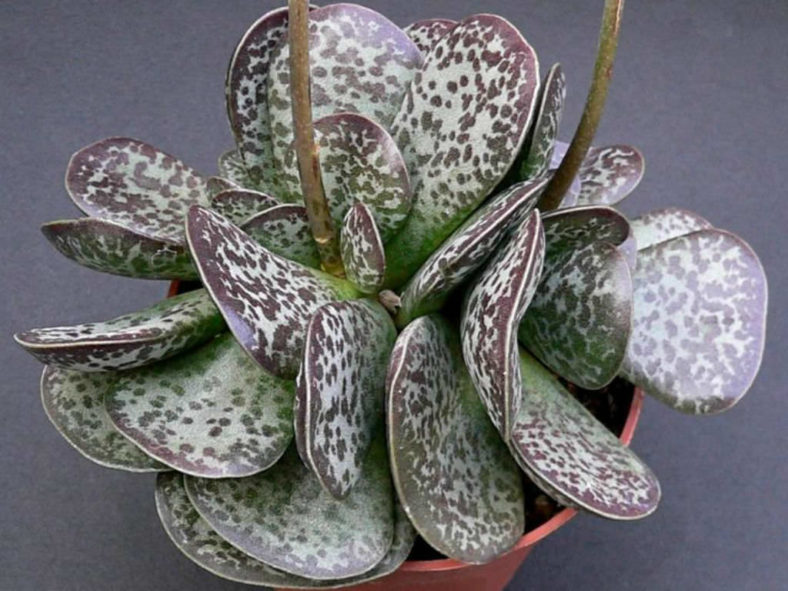Scientific Name
Adromischus trigynus (Burch.) Poelln.
Common Name(s)
Calico Hearts
Synonym(s)
Adromischus nanus, Adromischus rupicola, Cotyledon rhombifolia var. spathulata, Cotyledon trigyna
Scientific Classification
Family: Crassulaceae
Subfamily: Kalanchoideae
Genus: Adromischus
Etymology
The specific epithet "trigynus" (pronounced "try-GYN-us") means "having tricarpellary ovary" and refers to the flowers of this species, which have a gynoecium formed from three fused carpels.
Origin
This species is native to South Africa. It grows in sheltered rock crevices in the northern parts of the Great Karoo, from near Pofadder in the Northern Cape to near Aliwal in the Eastern Cape and into the southern Orange Free State.
Description
Adromischus trigynus is a dwarf succulent with a much-branched, tuberous base and short, erect branches with grey-green leaves mottled and often with a purplish-maroon marginal tinge. It can grow up to 2.2 inches (5.5 cm) tall and 4.8 inches (12 cm) in diameter. The compactly arranged leaves are elliptic to orbicular, usually concave above and more or less convex below, and have acute margins. They can measure up to 1.2 inches (3 cm) long and 0.8 inches (2 cm) wide.
The tubular flowers appear in late spring on stalks that can grow up to 14 inches (35 cm) long. They can reach up to 0.5 inches (1.3 cm) in length. The tube is pale yellowish green and covered with a thick bloom. The petals are off-white to slightly tinged pink or deeper pink in the throat.

How to Grow and Care for Adromischus trigynus
Hardiness: USDA hardiness zones 9b to 10b: from 25°F (-3.9°C) to 40°F (4.4°C).
Many species are easy to grow in any free-draining, gritty compost. Their compact habit allows a collection to be maintained in a small space, and they grow well on any sunny window ledge or the top shelf of the greenhouse. Water mostly from spring to fall, and let them dry out between waterings. Adromischus tolerates cool, frost-free conditions during the winter if kept dry. It is well to keep water off the foliage during the winter. Mealybugs and vine weevils can be discouraged with a systemic insecticide.
Adromischus can be propagated from a single leaf, which should be placed against the side of the pot so that the stem ends touch the compost. Some species drop their leaves easily, and although each leaf will form a new plant, growing a large specimen can be challenging. In other cases, leaves for propagation must be carefully detached with a sharp knife.
Learn more at How to Grow and Care for Adromischus.
Links
- Back to genus Adromischus
- Succupedia: Browse succulents by Scientific Name, Common Name, Genus, Family, USDA Hardiness Zone, Origin, or cacti by Genus
Photo Gallery
Click on a photo to see a larger version.


